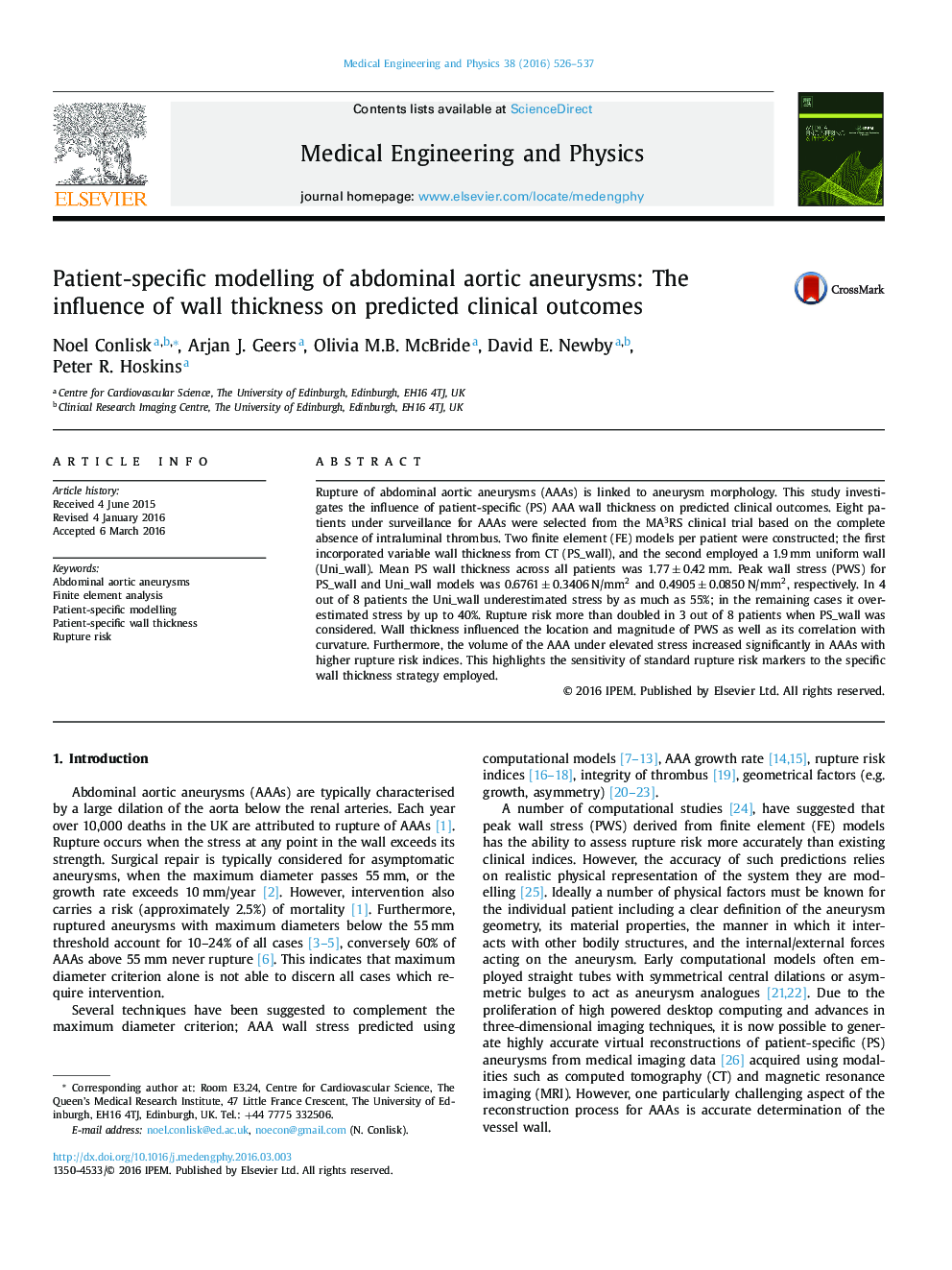| Article ID | Journal | Published Year | Pages | File Type |
|---|---|---|---|---|
| 875660 | Medical Engineering & Physics | 2016 | 12 Pages |
•Patient specific (PS) wall thickness was obtained from CT data of AAAs with no ILT.•Effect of uniform and PS walls on clinically relevant outcomes was assessed.•Correlation of curvature with stress reduced on inclusion of PS wall thickness.•The volume of the AAA under elevated stress increased in several PS wall cases.•Including PS wall thickness more than doubled the risk of rupture in 3 of 8 cases.
Rupture of abdominal aortic aneurysms (AAAs) is linked to aneurysm morphology. This study investigates the influence of patient-specific (PS) AAA wall thickness on predicted clinical outcomes. Eight patients under surveillance for AAAs were selected from the MA3RS clinical trial based on the complete absence of intraluminal thrombus. Two finite element (FE) models per patient were constructed; the first incorporated variable wall thickness from CT (PS_wall), and the second employed a 1.9 mm uniform wall (Uni_wall). Mean PS wall thickness across all patients was 1.77 ± 0.42 mm. Peak wall stress (PWS) for PS_wall and Uni_wall models was 0.6761 ± 0.3406 N/mm2 and 0.4905 ± 0.0850 N/mm2, respectively. In 4 out of 8 patients the Uni_wall underestimated stress by as much as 55%; in the remaining cases it overestimated stress by up to 40%. Rupture risk more than doubled in 3 out of 8 patients when PS_wall was considered. Wall thickness influenced the location and magnitude of PWS as well as its correlation with curvature. Furthermore, the volume of the AAA under elevated stress increased significantly in AAAs with higher rupture risk indices. This highlights the sensitivity of standard rupture risk markers to the specific wall thickness strategy employed.
